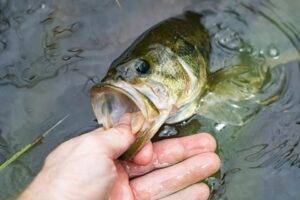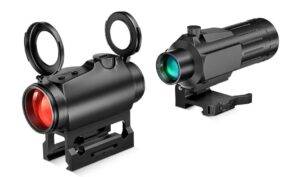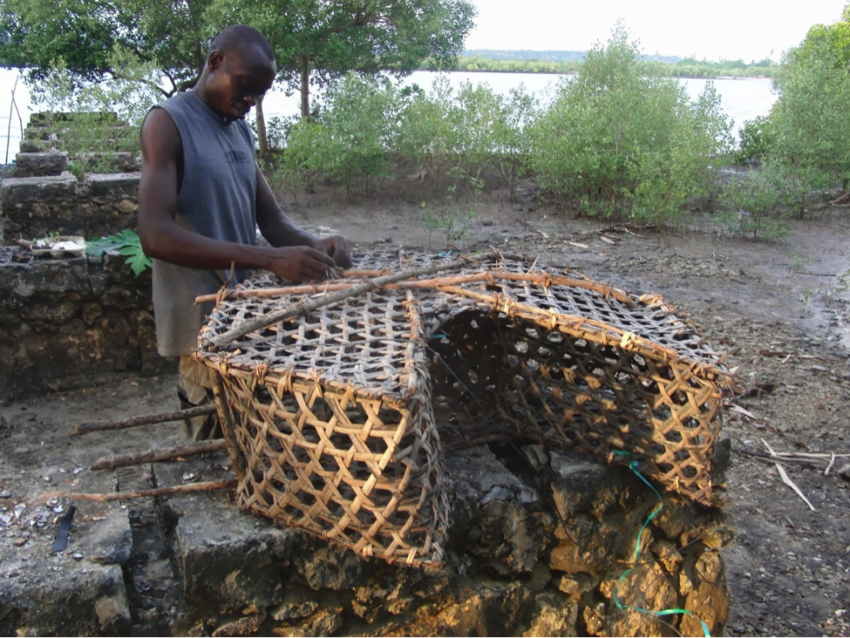
If you’re into fishing and you want to acquire the skills of building a fishing trap, you’re in the right place. Fishing traps are a great way to catch some fish on the side – you can easily fish all day long with your pole and all you need to do is check your traps every once in awhile.
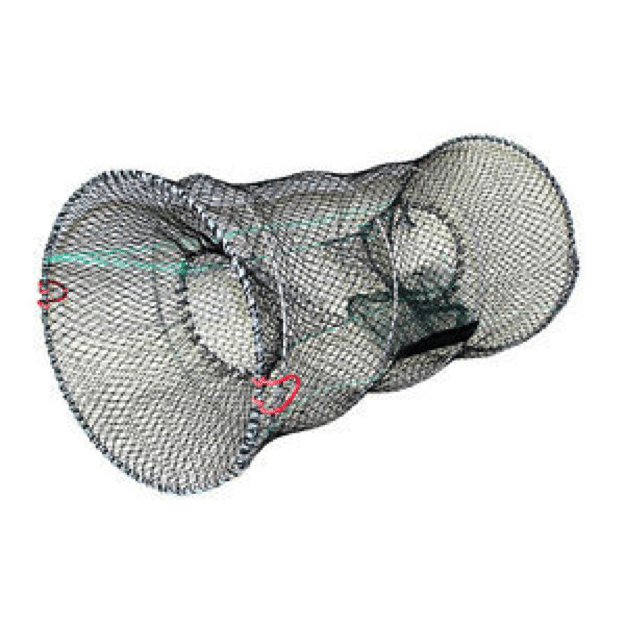
Catching fish by using traps is a very efficient way to score
Anyhow, building a cage fish trap is not an easy task – the process of constructing the contraption requires a lot of effort, but the hard part is in the details. What’s more, choosing a proper bait and the art of placement can’t be taught so easily – you can’t simply toss a trap and hope for the best. Anyway, we’re here to provide you with all the insight you will need, so let’s get right to it. More tips at Bestsurvival.org
The Preparation Steps
Before you even start building, you ought to determine the dimensions, design your fish trap, and acquire all the materials you will need. The efficiency of your trap will be determined by the quality of your engineering skills, but don’t take this too literally – everyone can design a fish trap and it’s up to you how big your trap will be, what game you’re after, and how much cash you want to invest.

A good fisherman takes his tame to prepare the trap
Step 1 – Determine the dimensions
This is, perhaps, the most important step – the amount of effort and cash you need to invest will impact the overall efficiency of your trap, so take your time and decide. A big trap will be more visible, but you will also need to pay more attention to detail – smaller fish can easily slip through the cracks while bigger ones might be able to break through if the construction is flimsy.
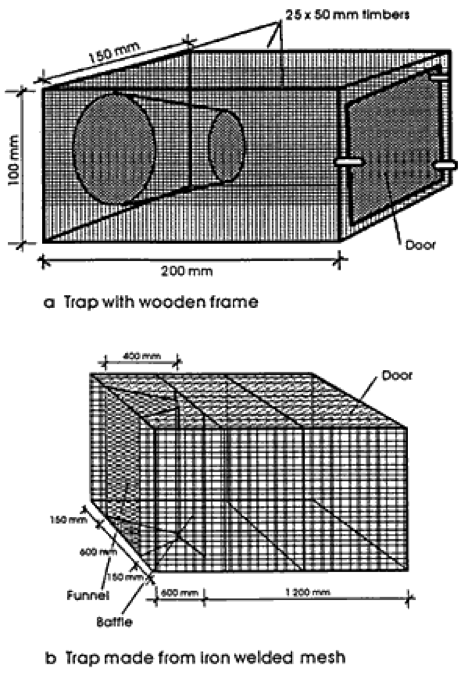
Step 2 – Design the trap
This may sound pretty odd, but there are a lot of types of fishing traps. Most fishing traps can be made at home and on your own, but some larger, heavy-duty traps might require extra hands. Anyways, if you’ve already decided the dimensions, now it’s time to choose the type – whether it is oval, square, or elliptical, it’s up to you.

There are various types of fishing traps
Step 3- Decide on the material
By now you’ve already done most of the planning job. The last part of the preparation is to decide which material you will use. This is the handy part and your engineering skills will be put to test – if you are not proficient with a welding tool, you might want to go with a wooden construction.
Let’s see what materials can be used and what are their benefits:
- All-wood construction
This is the most basic model of a fish trap and the material that offers the least flexibility. Anyhow, all you need to do is cut wood, and shape it in the way that it looks like your design. There are no limits to what you can do – wooden traps can still be made in any shape, but if you want to go with an oval design, you need to use a flexible type of wood.
This type of fish traps offer great durability and can be used to score big fish – the wood is not so easy to break and you can hope of catching fish of any size if you’ve done everything correctly. Wooden constructions don’t have gaps and cracks for smaller fish to slip through.
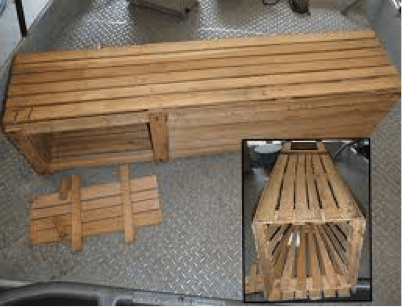
Fish trap made entirely of wood
- All-wire construction
The fish traps made of wire are best used to catch large quantities of smaller fish. They’re easy to make, easy to fold, and the materials aren’t too expensive. Either way, the wire fish traps are favored by many professional fishermen across the globe because of their simplicity and efficiency. They’re also very expendable because of the low material cost.
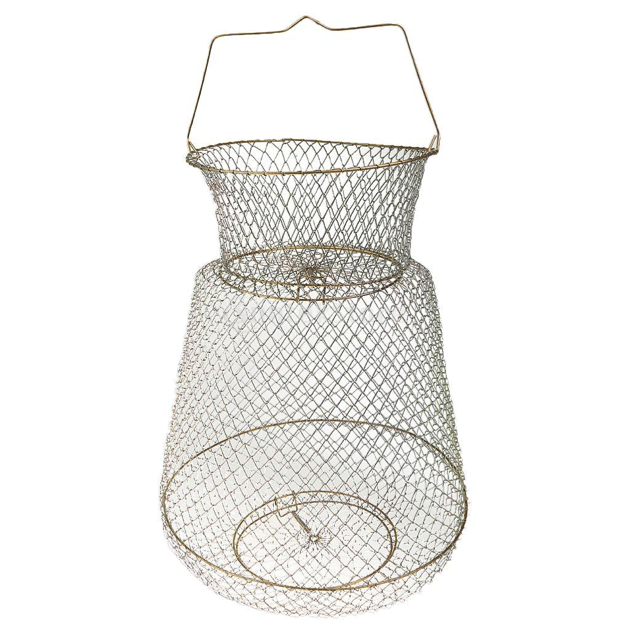
A perfect example of the all-wire fish trap construction
- Wood & wire construction
By combining wood and wire you will get more versatility – once you’ve started building you may notice some flaws in the design, and this combination will give you means to fill those gaps with extra wood or wire.
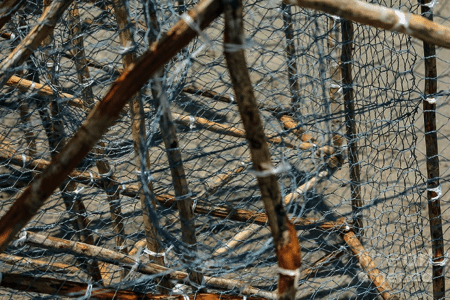
Wood and wire fish trap
The Building Stage
Believe it or not, this is actually the easier part. Once you’ve designed your trap, chose the materials and type, all you need to do is simply follow the sketch, cut the material, and you’re set to go.
Step 1 – Cut the material
It doesn’t matter which material you’ve chosen, it’s only important that you’re accurate. Your construction needs to be durable enough to withstand the pressure of a water current, but you also need to keep in mind that bigger fish might get stuck and tear your trap apart if the durability is not sufficient.
Cut all the material pieces into smaller fragments and organize them next to your tools. Once you’re done you can continue to the next step.
Step 2 – Create a frame
Remember the part when you had to draw a sketch of your design? This is a parallel step – now you have to assemble the pieces to resemble your drawing (illustration). Use the tools that are appropriate for the job – accurate cutters and pliers for wire and special cutting tools for wood. Affix the pieces together firmly.

A fish trap frame
Step 3 – Seal the construction
You can skip this step if your design involves the all-wire construction (as it’s already sealed). Once you’ve done with the frame, add wire (or similar, according material) by nailing it down or stapling it to the frame. This should be done so that the fish can’t escape your trap.
Step 4 – Check for cracks
The last part is checking for any potential flaws and cracks. If there’s even the smallest gap, the smaller fish could easily escape, leaving your trap empty and bare. Take this step seriously and spend as much time as needed.
 Author Bio: Harry Garrett is the man behind HuntingGeek.com. Growing up in a family with a proud tradition of hunting, Harry has built up his passion about bow hunting and survival stuff. Hunting Geek’s mission is to bring simplified and actionable bow hunting and survival advices.
Author Bio: Harry Garrett is the man behind HuntingGeek.com. Growing up in a family with a proud tradition of hunting, Harry has built up his passion about bow hunting and survival stuff. Hunting Geek’s mission is to bring simplified and actionable bow hunting and survival advices.


